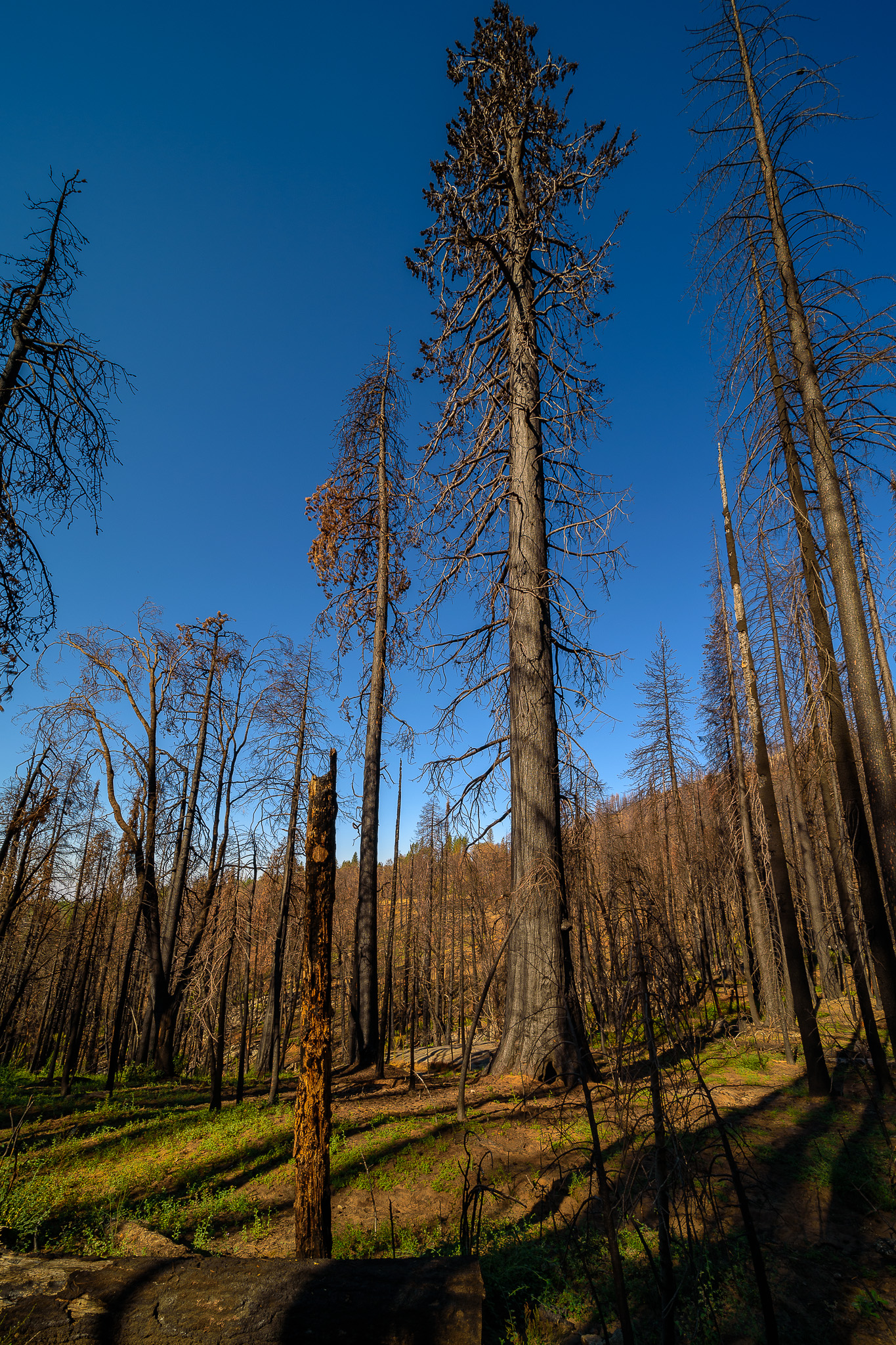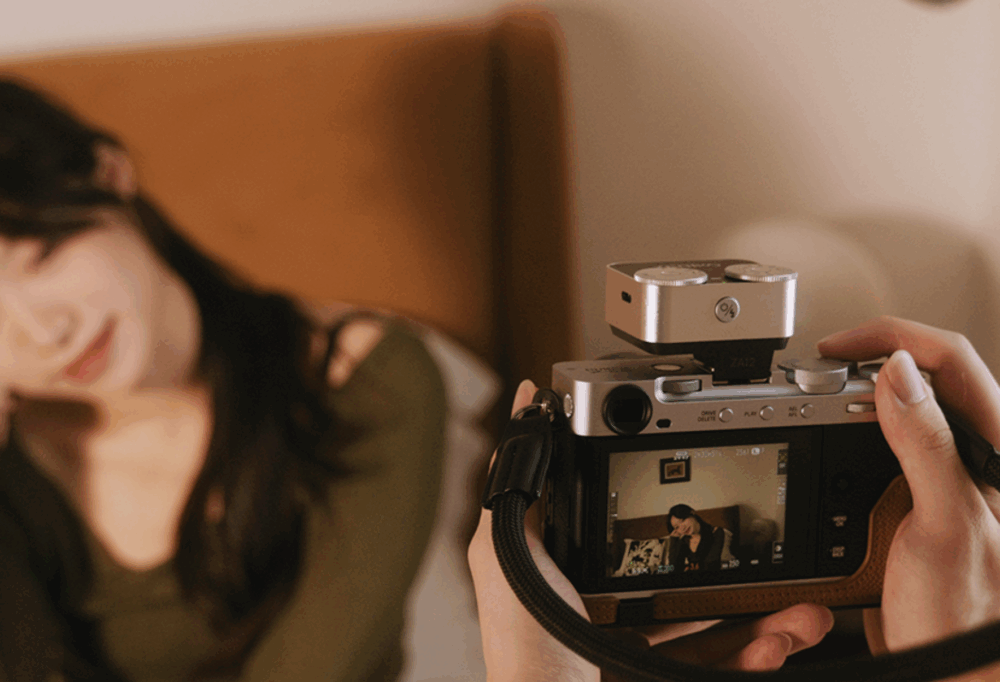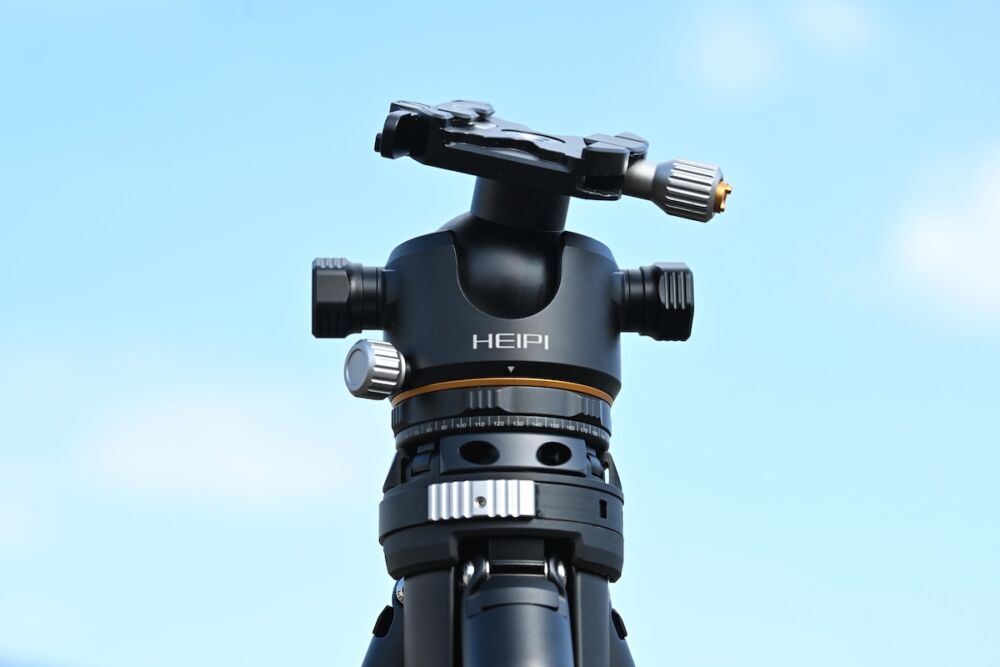Ultra-wide lenses have gotten very popular among all types of photographers over the last decade. People have been hooked on the downright crazy angle of view that you get with focal lengths such as 14mm. In fact, a handful of new zooms have hit the market in recent years which go even wider, such as Sony’s 12-24mm f/4 G, Sigma’s 12-24mm f/4 Art, and Canon’s 11-24mm f/4 L.
The bad news is, each of these lenses is increasingly enormous and heavy. The Canon 11-24mm weighs a whopping 2.6 lbs, and the Sigma 12-24mm is 2.54 lbs. (That’s over 1.1kg either way!) The Sony 12-24mm weighs “just” 1.25 lbs, because it’s got a bit more plastic in it, and is made specifically for its mirrorless mount.
 Milky Way Over Lake Elsinore, CA
Milky Way Over Lake Elsinore, CA
Learn to photograph the Milky Way in our complete workshop HERE!
Venus Optics Laowa 12mm f/2.8 Zero-D, Nikon D750
15 sec @ f/2.8 & ISO 3200
Also, each of these lenses has an absolutely enormous front element, which is not only dangerously exposed to potential damage but also does not accept any standard filters.
So, are there any alternatives which aren’t so massive, heavy, and expensive? In this lens review, we’ll consider the Venus Optics Laowa 12mm f/2.8 Zero-D , and conclude whether or not it is a good alternative to its competition!
 Venus Optics Laowa 12mm f/2.8 Zero-D – $949 on B&H,
Venus Optics Laowa 12mm f/2.8 Zero-D – $949 on B&H,
Available Natively on Nikon F, Canon EF, Sony FE & A, and Pentax K
The Venus Optics Laowa 12mm f/2.8 Zero-D
With such a long full name, we’ll refer to it as the “Venus 12mm f/2.8” from now on. You’re welcome!
The Venus 12mm f/2.8 is a rather compact lens. In fact, it’s downright tiny compared to any of the ultra-wide zooms that reach 12mm. It’s also significantly smaller than the Irix Firefly/Blackstone 11mm f/4, by the way. It is, however, still a little bit hefty, at around 1.5 lbs, due to its all-metal construction. This creates the overall first impression of the lens being solid, maybe even worthy of the title “indestructible”, although of course, only time will tell.
The Laowa 12mm is packaged extremely nicely, in a “quality-assurance” style sealed box, as well as an inner vacuum-sealed bag!

Pros
Okay, let’s dive right in! I want to get right to the point, and answer the biggest questions you’re probably asking yourselves:
1.) Does this lens actually have zero distortion?
Yes, indeed it does! Barrel/pincushion/mustache distortion is essentially nonexistent with this lens. Adobe Lightroom does have a profile, but it barely does anything other than correct the vignetting.
 Laowa 12mm f/2.8, Nikon D850
Laowa 12mm f/2.8, Nikon D850
1/250 sec @ f/8 & ISO 64
 100% Crop, Raw Processing & Normal Sharpening in Adobe Lightroom CC
100% Crop, Raw Processing & Normal Sharpening in Adobe Lightroom CC
This is really, really impressive for such a compact lens from a third-party, considering that even the name-brand options such as the Canon 11-24mm do have a little bit of mustache distortion. Of course, this might not be an issue if you process your images in raw conversion software that has a lens profile and if the distortion is mild enough that it doesn’t affect the image sharpness when corrected. However, it’s still an amazing feat for Laowa to have achieved, and anyone who shoots with a lot of straight lines in their images will enjoy it.
Let’s also not forget, of course, that you can’t apply a lens correction profile to video footage as easily as a raw still image!
2.) Very Impressive Build Quality
Getting right to the point again: this lens is built like a tank. In the realm of third-party manual focus lenses, the Laowa 12mm feels more like a Zeiss than a Rokinon or Samyang lens! For anyone who has had a generic or third-party lens literally fall apart on them, (I had a 14mm f/2.8 on which the front element literally came unscrewed and fell out once!) …the Laowa 12mm will be a welcome departure from the norm.
 Read Our Nikon D850 Review HERE!
Read Our Nikon D850 Review HERE!
3.) Solid Image Quality, Stopped Down
If you shoot stopped-down, you’ll be really impressed by this lens’ image quality from corner-to-corner. Unfortunately (spoiler alert) I’ll have to put the wide-open sharpness in the Cons category, however, there are undoubtedly many photographers who plan to always use this lens at f/4-5.6 or smaller, at which apertures the Laowa is giving its bigger, more expensive competition quite a run for their money.
 Milky Way In Laguna Beach, CA
Milky Way In Laguna Beach, CA
Learn how to photograph the Milky Way in our complete workshop HERE!
Laowa 12mm f/2.8, Nikon D850
30 sec @ f/5.6 & ISO 6400
Not only is the distortion essentially zero, but there is also essentially zero color fringing, even wide open.
Regarding flare, well, that’s a bit subjective. Personally, I find all forms of flare to be a distraction unless I’m specifically shooting romantic portraits in backlight situations. So, the fact that the Laowa 12mm has some flare dots is probably a con, however, the other elements of flare may be considered pleasing to anyone who actually enjoys this “characteristic”.
Last but not least, sunstars are subtle but pleasing, even starting at f/5.6-8!
 Laowa 12mm f/2.8, Nikon D750
Laowa 12mm f/2.8, Nikon D750
30 sec @ f/8 & ISO 100
4.) Great Macro Capability
Despite being such an ultra-wide focal length, the Laowa 12mm can focus so close that it is definitely an interesting macro lens. It provides a unique view that is completely the opposite of what most macro lenses will deliver. Just be careful that you or your camera don’t cast a shadow on your subject, because you’ll be mere inches or centimeters away from your subject!
 Laowa 12mm f/2.8, Nikon D750
Laowa 12mm f/2.8, Nikon D750
1/200 sec @ f/5.6 & ISO 100
 Obligatory Cute Pet Pic!
Obligatory Cute Pet Pic!
Cons
Unfortunately, there are a few little quirks about the Laowa 12mm f/2.8 that I must mention, plus one rather significant con which may affect your buying decision.
Some things, of course, are just drawbacks that come with the territory of using a 12mm lens, period. Perspective distortion, keystoning or converging verticals, is absolutely crazy on any lens this wide, not just the Laowa. See the animation below for an example of what just a slight upward angle can do to your composition:
 Again, this isn’t a con of the Loawa, just a drawback of 12mm, period. You can choose to either correct this distortion later in post-production, or shoot relatively level camera angles in the field.
Again, this isn’t a con of the Loawa, just a drawback of 12mm, period. You can choose to either correct this distortion later in post-production, or shoot relatively level camera angles in the field.
Okay, let’s get to the actual cons that pertain to the Laowa 12mm in particular.
 Laowa 12mm f/2.8, Nikon D750
Laowa 12mm f/2.8, Nikon D750
30 sec @ f/2.8 & ISO 3200
1.) Poor Wide-Open Corner Sharpness
Let’s get the biggest issue out of the way first: The 12mm f/2.8 is not as sharp off-center at f/2.8 as I would like to see. Even by the rule-of-thirds area it shows a bit of aberration, and in the extreme corners it is pretty “fuzzy” overall at f/2.8.
 Center Sharpness 100% – f/2.8 (24 megapixels, sharpening applied)
Center Sharpness 100% – f/2.8 (24 megapixels, sharpening applied)
 Corner Sharpness 100% – f/2.8, f/4, f/5.6 (24 megapixels, sharpening applied)
Corner Sharpness 100% – f/2.8, f/4, f/5.6 (24 megapixels, sharpening applied)
The stopped-down sharpness is good, as I mentioned in the pros section above, but in the extreme corners you won’t really see that amazingness until f/5.6 or f/8, depending on what resolution you’re shooting at. So, if you’re only concerned about central sharpness at f/2.8 you’ll be okay, however, if you’re really going to pixel-peep the corners at f/2.8 and f/4, you’ll definitely find better results with those f/4 zooms that hit 12mm or 11mm.
2.) Poorly Designed Cap and Hood
Next, there are a couple of odd design issues which I found to be a bit frustrating. Firstly, the lens cap that comes with the Laowa 12mm is a slip-in type lens cap, and it relies on its snug fit in the inner, relatively tiny hood. The cap simply doesn’t stay on very well, it falls off with the slightest tug or bump.
Furthermore, the outer hood, which the lens cap does not attach to, is removable. I believe this is so that you can add the accessory 100mm filter system, however, it makes the while lens a lot more difficult to attach and detach to and from a camera body itself, because it effectively means almost the entire lens surface is rotating parts. I wish that Laowa/Venus had designed the lens so that the hood was fixed, and found a different way to attach their filter system instead.
3.) No Electronic EXIF Data
Lastly, while Canon and Sony shooters may already be used to this, the Laowa 12mm is a completely “cold” lens, meaning it has zero electronic communication with the camera body, even Nikon bodies which often have electronic contacts even on many manual focus lenses now. Therefore, you will have zero EXIF information about focal length or aperture on most cameras, and on Nikon you’ll have to treat the lens like an AIS classic lens- that is, you’ll have to input the focal length and max aperture information manually, and unfortunately Nikon doesn’t even have 12mm as an option, since they’ve never made a 12mm prime lens themselves. This means that the best you can do is call it a 13mm lens as far as in-camera EXIF is concerned.
To be honest, for $950 I expect even a manual focus lens to have electronic contacts for aperture control and EXIF information. I might forgive it and justify the price if the optics were truly flawless wide open at f/2.8, however that was of course con #1.
 Laowa 12mm f/2.8, Nikon D750
Laowa 12mm f/2.8, Nikon D750
1/4 sec @ f/8 & ISO 3200
Who Should Buy The Venus 12mm f/2.8
Okay, let’s not sugar-coat anything here: While the Venus 12mm f/2.8 has a lot to offer, it may not be the right lens for you if you value corner-to-corner sharpness when shooting wide-open on high-megapixel cameras. The Nikon D850 made this lens reveal its weaknesses rather clearly at f/2.8, and even with the D750 it was a bit of a struggle to get ultra-sharp results in the corners until f/5.6 or f/8.
So, with that said, this lens isn’t a good choice for those who are looking to do high-resolution nightscapes or other types of photography where f/2.8 sharpness is so important through the entire image frame.
It is, however, very good at turning out 1080p or even 4K resolution frames, for either timelapse or video work. So if you’re into night photography but aren’t very interested in getting 40-50 megapixels worth of sharpness out of the lens at f/2.8, then you could still put the lens to good use.
Okay, moving on. As soon as you stop this lens down to f/5.6-11, it becomes a workhorse that really puts up a good fight against its behemoth zoom competition. (Remember, the other lenses that can hit ~12mm are all f/4, anyways!)
This means that if you value the one respect in which this lens truly shines, (its impressive lack of barrel/mustache ultra-wide distortion) …then you will absolutely love this lens. Architectural photographers, interior real estate photographers, or even just casual street / urban photographers, will all absolutely love this lens.
 Laowa 12mm f/2.8, Nikon D850
Laowa 12mm f/2.8, Nikon D850
1/500 sec @ f/5.6 & ISO 64
Also, if you shot traditional landscapes (or anything, really) at f/5.6+, and often find yourself shooting natural scenes with a straight line such as a horizon, you’ll also appreciate this Zero-D lens.
There are probably a lot of other specific types of photography that this lens is good for, of course, though I can’t list them all here. If you have a question about either a genre of photography or your own shooting style and priorities, please leave a comment below!
More Ultra-Wide Lens Reviews Coming Soon!
On that note, keep in mind that if you are indeed looking for lenses in this focal range (or at least close) that are actually ultra-sharp at f/2.8, we have some more lens reviews coming soon in the 14mm category, which may suit your needs a little better! So, be sure to check back soon.
 Laowa 12mm f/2.8, Nikon D750
Laowa 12mm f/2.8, Nikon D750
1/80 sec @ f/11 & ISO 100
Laowa 12mm f/2.8 Lens Review Conclusion
So, there you have it. If you need a lens that goes to 12mm, your options are very limited to begin with, and the Venus Optics Laowa 12mm f/2.8 Zero-D is in a league of its own thanks to its combination of portability, durability, and essentially zero distortion. It’s been a delight to use such a rock-solid lens that is still not ridiculously heavy. If you’re looking for an alternative to the ultra-wide zooms that hit ~12mm, which doesn’t break the bank or your back, then this is the lens to get! You can purchase it on B&H here for $949.














